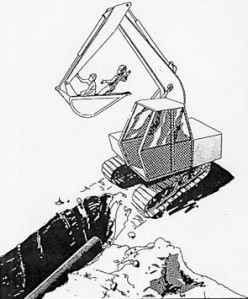by Karen Taylor Bennett
Q1. How many reports will I have to write on the assessment?
This is a typical question that I get from learners preparing to sit the Level 2 Write Technical Reports (Basic) assessment. Rarely are you asked to write more than one report on the assessment paper.
Q2. What are some common question formats presented in the assessments offered by HEART Training institutions and other learning institutions offering vocational qualifications in Jamaica?
Questions are given as writing prompts. They may be form atted as a summary of the the incident facts. You may be given a single question or options to choose from. There are usually no multiple choice objective -type questions.
Study these sample past paper questions for a idea of what questions look like.
- Choose ONE of the writing prompts describing a different incident below. Write the report.
- You were installing fluorescent bulbs in your company’s warehouse, when you slipped off the ladder and broke your hand.Write an incident report detailing when, where, how and why the accident happened.Use a memorandum format for your report.
2. While working in the electrical lab yesterday, a fire started. Write an eye witness account addressed to your supervisor tracing the events surrounding the fire. State your conclusions about the surface causes of the fire and make recommendations to prevent a recurrence of fires caused by these factors.
3. Sometimes a photograph or illustration of an accident scene is used with specific details of the scenario. As far as possible use these details given in your report.
Use the picture below to describe the circumstances under which your work colleague received an electrical shock that caused damage to his hand and the loss of two fingers.
Write the report based on what you observed and facts you would have gathered, addressed to your Supervisor. Include the relevant details that your company would need to know about the incident.
Involuntary Muscle Contraction
This worker fell and grabbed a powerline to catch himself. The resulting electric shock mummified his first two fingers, which had to be removed. The acute angle of the wrist was caused by burning of the tendons, which contracted, drawing the hand with them.
3. Do I have to write all reports in memo format even if the question does not state this?
You are usually expected to write a memo report. A memo report is just a report which uses the Memo format. Even if the instruction does not state this, expect to address your report to a superior. Common designations are the Supervisor or Head of Department. In some instance you’ll be told to write to the Manager or Contractor. You are writing a fictional report so prepare to make up not only the incident, but names of the people and places involved. A standard Memo report begins with the Heading.
The Heading has four parts:
i) Memorandum
Write the word Memorandum top center of your page.
ii. To: line
Below the word Memorandum, in the left margin, write To: (Use the Tab button if you’re using a computer, or measure about one inch space behind the colon, and start writing the name of the person you are writing the report to, for example, John Black or J. Black). Next, write Mr Black’s job designation.
You can choose to write this beside the person’s name horizontally so it looks like this:
To: John Black – Supervisor
Note that I’ve capitalised the T in the word To: and added a colon (:) behind it. If you are writing the job title beside the name, separate the words with a hyphen as seen in thee example above.
iii) From: line
The writer’s name goes here. Add same tab space as the To: line behind the colon to enable uniformity of presentation, and then write your name.
iv) Date: line
Write the date on which you are writing the report. The preferred style for the sake of clarity is November 25, 2013.
v.) Subject: line
Give busy employers, and other readers in the busy workspace a chance to get a quick idea of what your report is about by creating a brief subject that sums up what the report is about. The Subject is your topic. It should be short and concise. Write it like a newspaper headlines. Study some headlines on the front page of your daily or weekly newspaper to get an idea of what I mean.
4. Can you share some tips for writing effective subjects for incident/accident reports?
Candidates writing the report often commit these three unpardonable crimes in writing reports. They write
- vague, one-word subjects, for e.g. Accident, Injured or Fire
Readers may discard a report that has a heading that is too vague.
- complete sentences for the Subject.
E.g. I Broke my Arm in An Accident onsite This Morning.
Two key words to remember when writing the Memo’s subject are concise and specific.
- Long Subjects that extend to two or more lines
While some business memos may warrant this kind of Subject, try to summarise and constrict what you need to say to one line.
These subject writing bloopers described above makes you sound like a novice rather than a professional. Keep it succint and newsy while maintaining a formal, professional tone. Remember, this is business writing, not a short story narrative.
5. What should I pay attention to in regard to the presentation of a report?
So now that you have an edge on writing effective Subject lines, it’s time to look at Presentation. Marks are often alloted to the visual aspect of the report so spend some time especially on getting your spacing right. You may not be given the opportunity to type your report in the assessment. But you should still present a professionally handwritten paper that is visually appealing.
The standard memo format presents the heading section of a memo to have a LINEAR look.
In this format, all lines are aligned uniformly beneath each other. Personally I prefer this style, as it makes the presentation look neater which is what you should aim for.
Standard Format
Memorandum
The heading segment follows this general format:
TO: (readers’ names and job titles)
FROM: (your name and job title)
DATE: (complete and current date)
SUBJECT: (what the memo is about, highlighted in some way)
Style 1
Memorandum
To: John Black – Supervisor
From: Karen Taylor Bennett – Electrical Technician KTB(Signature)
Date: November 25, 2013
Subject: Report on Fatal Electrical Accident at Plant
Note: Some assessors expect to see an affixed handwritten signature beside your name in the From: line.
Style 2
Note: You may notice that I have used double space between each of the elements below. This is not standard. I can’t find spacing deature in WordPress page to apply the correct spacing. When you write your heading, apply single space between the person’s name and job designation and doublespacing between the To, From, Date, and Subject elements.
Memorandum
To: John Black
Supervisor
From: Karen Taylor Bennett KTB (Your signature, required if presenting as hard copy)
Welder
Date: November 25, 2013
Subject: Report on Fatal Electrical Accident at Plant
Some Additional Writing Tips to Help you Craft an Effective Subject
You might need additional practice in summarising to help you improve in this area.
Try this: Take a sentence from the first paragraph of a newspaper and condense its main idea to four or five words. First, cross out all the prepositions and conjunctions. Keep the noun and verb words. These are called content carrying words or key words. Try to find a general word or category to replace synonymous words or words that share a common idea.
Another way to practice your summarising skills is to create a telegram from the first paragraph of your report. Prune the unnecessary details until you have the required word limit while maintaining the essence of the message you wish to convey to your reader in 30 seconds.
If you’re having difficulty coming up with an effective subject at the start of the assessment, don’t sweat it. You don’t have to write the subject first. You can write your report draft and then come back to writing the subject.
To get your writing juices flowing, try this brainstorming method.To brainstorm for a subject idea, first ask yourself this key question,
- What is the news?
To explore this further, ask yourself
- What type of accident happened?
Type of Accidents are Fire, Fall, Electrocution, Collapse of Trench, Collision, Altercation, Chemical Spill
- What was the outcome of the accident?
Describe it in terms of a fatality, injury or near -miss. For e.g. Eye Injury, Back Injury, Inhalation of fumes, Fainting, Broken limb, Lacerations to a body part, Loss of limbs, Minor Wounds. You can also identify the person injured in the SUBJECT.
Try this: Jot down on a piece of paper the following words:
Report on . . .
State either the name of the accident or the accident outcome where the ellipsis ( . . .) is.
EXAMPLES OF EFFECTIVE REPORT SUBJECTS:
Here are some examples to help you get started:
- Report on Electrical Fire at Crossroads Plant
- Report on Fume Inhalation Accident in Welding Workshop
- Report on Trench Collapse and Workers’ Injury Today
- Worker Injured in Construction Site Accident
- Colleague Electrocuted
- Martin Brown Loses arm in Machineshop Accident
- Back Injury Sustained in Fall at Factory Today
- Forklift Accident in Warehouse
- Workers Seriously Injured in Highway collision
- Eye Witness Account of Altercation at Security Post
- Break-in at Stores
- Warehouse Fire Leads to Lost Hours
Backhoe Image obtained from http://www.setonresourcecenter.com/MSDS_Hazcom/FatalFacts/f-facts32.html
Electrical burns image obtained from OSHA Construction eTool www. osha.gov.
More Useful Resources to help you with Memo writing
https://owl.english.purdue.edu/owl/owlprint/590/
http://www.fsb.muohio.edu/heitgedl/Memo%20writing%20tips%20ACC333%20SP06.pdf
http://emedia.leeward.hawaii.edu/hurley/documents/memoformat.pdf
In another post, I’ll talk about planning strategies- getting the facts together to write your report and managing your time within the assessment.
Leave a comment or question in the comment box or your contact information. You’ll receive more tips, and assessment help in your inbox everytime I post.




